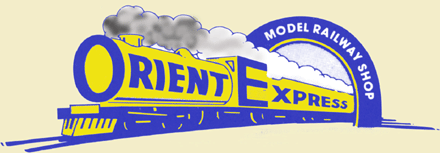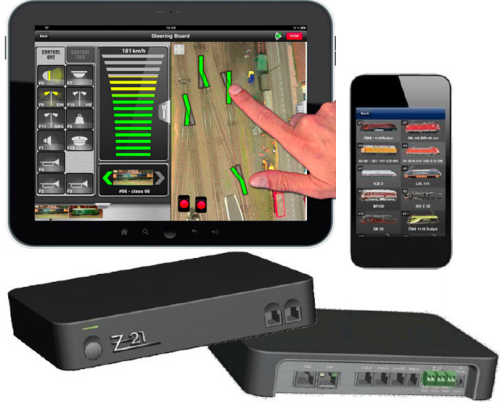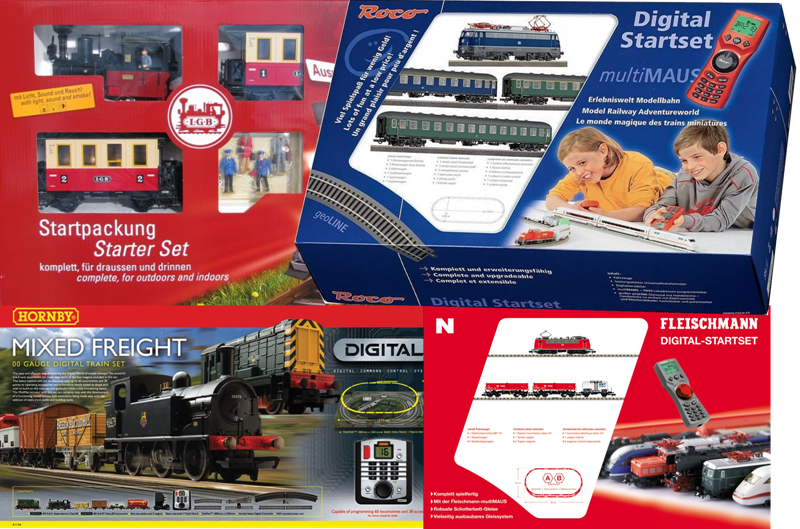


Model Trains are a wonderful hobby to get involved in and offer plenty of enjoyment and relaxation. But as with any hobby the many choices available can seem overwhelming at first. There are a few rules to get you started on the road to many hours of pleasant railroading.
1) Choose the right scale and system bearing in mind the space available
2) Buy quality to avoid disappointment
3) Don’t hesitate to seek professional advice. We are here to help you!
The Scale determines the size of board or room you need, but also will have a lot of effect on the way you can work with the models. Expressed
in various forms the chosen scale determines our 'ruler'. We decide on how long any given real dimension is.
For example we might decide that any
real item of, lets say, 1 meter length will be reduced to 1 centimeter, which in turn reduces any item of 2 m length to 2 cm correspondingly. In
such case we model 1:100, we divide every real dimension by 100. That is easy.
For various historic reasons most common scales are not that simple
to calculate but follow the same principle. The most common scales in Model Railroading are the following:
Name
N Scale
HO Scale
OO Scale
G Scale
Scale
1:160
1:87
1:76
1:22.5
Track Gauge
9mm
16.5mm
16.5mm
60mm
Comment
Ideal if space is limited
By far the most common worldwide
British prototype only
Garden Rail
So, if you take an average locomotive, i.e. 20m length in reality and divide this measurement by the various scales you get a rough picture of
your model dimensions (or even easier, you come to the shop and look at the models displayed in each scale). Which scale you prefer depends obviously
on the available space as well as your preferences.
In simple terms this translates to: For an HO Layout you should allow at least for a classic
2400 x 1200mm (8’ x 4’) board while for N gauge 1500 x 800mm (5’ x 2’8”) should be the minimum. The G scale is rather suitable for the garden or for
temporary layouts in a rumpus room or the shed.
Similar to the choice of different scales there is also the obvious choice of which train. This could basically mean: Goods Train or Passenger train hauled by a Steam, Diesel or Electric loco. But in a true ‘multicultural’ fashion you also have the choice between Australian, American, European or British trains. While you can mix these as much as you like since they all run on the same track in each scale, it does make it a bit awkward, at least in HO, since the couplers are different.
Australian
A good range of diesel locomotives is available by Auscision, Austrains and others, but most items are limited productions runs. In recent
years the availability of ready-to-run rolling stock has increased tremendously, leading to a huge surge in the popularity of modelling our
home grown railways. All mass produced items come with the realistic knuckle coupler. They are uncoupled by magnets underneath the
rails and look very realistic.
American
A large range of excellently detailed diesel and steam locos are available, many with factory installed realistic sound. A huge variety of
rolling stock is available ready to run due to the large customer base in America. Beware of some very cheap brands as the range of quality
varies a lot for the American market. All items come now with up-to-date realistic knuckle couplers (Kadee, McHenry etc).
European
A very large range and variety of product is available due to the diverse prototypes. While there are about 4 different couplers fitted by
the various brands, it does not constitute a problem since there is a standard coupling pocket for easy exchange. Most models have excellent
motors/gear boxes and are made to consistent high quality. Almost all models are fully detailed ready to run models.
British
The quality of the new releases from Hornby has improved greatly in recent years and the range of rolling stock is good. The old tension hook
coupler is still standard. The other major difference is the scale: OO scale models run on standard HO track but are approx 15% larger (refer to the scale table above).

Everything seems to go digital these days and this hobby is no different. While the track, the loco and wagons are the same as in the conventional sets of previous years, digital controllers incorporate modern control systems, which quickly became a worldwide standard for most model railways. Lets explain the basic principle of these systems:
All conventional systems sold over the last 50 years contained normal ‘Analogue’ controllers. These worked by adjusting the voltage on the track and
thereby the speed of the locomotive. Each train on the same electrical section would stop or start at the same time, so in most cases you would run
only one train per electrical section.
Modern microprocessor technology makes life easier. Digital Command Control Systems (DCC) use a constant voltage applied to all track. The hand
controller sends digitally coded messages to the locomotive via the track. Each loco is equipped with an electronic chip called a decoder, which
converts the digital message to change the speed, switch the head lights or perform other functions like activating the smoke unit or sound. This
way it is possible to control almost any number of locos (and other devices) without the need for complicated wiring.
Now with the Roco/Fleischmann Z21 system you can even control the trains with your iPad/tablet or smart phone.
Once you have considered the above points, the only major choice remaining is the track. In standard HO there are at least 10 readily available track systems around!
The very first recommendation independent of the scale is: Use Nickel-Silver track only wherever possible (or brass for garden railways). Ordinary
steel track will always corrode particularly in humid conditions, in the shed or unheated rooms. It requires a lot of heavy cleaning. While there
is certainly the same amount of dust and other deposits on Nickel-Silver track it can be wiped off so much easier since there is no chemical corrosion involved.
See our track page for further information.

Having considered all of the above you should now be ready to get started in this wonderful hobby.
We carry a large range of starter sets from
Roco, Fleischmann, Hornby and LGB. Each set contains a locomotive, three or four wagons, an oval of track, and a controller (either conventional or DCC)
and these are the best value for money way to get started.
Please contact us for details on which starter sets are currently available, or for any further assistance.